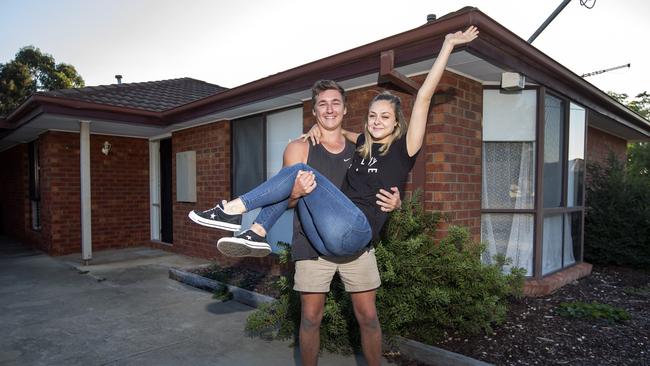First home super saver scheme hits speed bump
A plan to help first home buyers get a foot on the property ladder via their super wasn’t designed with auctions in mind.

That’s because first home buyers hoping to use their super to underpin a home deposit will need to apply to the ATO to release their funds first — and it will take 25 days to get the money out.
Unless the release has been formally approved by the ATO, the applicant can’t bid on a home. Although, once the release is approved, first home buyers have a year to use the cash.
In reality, the extended process for releasing funds under the scheme will restrict first home buyers to using the scheme to purchase houses where there is less urgency than the auction process.
Indeed, at this stage, the scheme looks like it will really only help well paid, extremely well organised first home buyers who act together as a couple and buy a house where the owner is not in a rush to sell.
The FHSSS marks the first major attempt by the government to exploit the central position of the family home in the tax system — and the first time super has been opened for any purpose other than hardship exemptions.
Expectations are high for the scheme as national house prices are dropping and first homebuyer schemes at state level have consistently created an uptick in purchases by first time buyers as a percentage of the wider market.
The FHSSS has actually been running throughout this financial year but July 1 2018 marks the date from which savers who have been accumulating funds under the terms of the scheme can apply to withdraw money.
Financial advisers have criticised the scheme as being complex but the outstanding problem is that it creates a very limited window of opportunity.
The essentials of the scheme are that an individual can save up to $15,000 a year within super — or cumulatively up to $30,000 over several years and withdraw that money from super and put it towards a first home deposit. Alternatively a couple could gather up to $60,000 by pooling their individual rights under the scheme
On top of the requirement for a release of funds from the ATO there are several other features of the scheme that will limit its popularity.
The money saved can only be from voluntary super contributions (either pre tax or post tax) and cannot include the money that goes into super from employers under the Superannuation Guarantee Charge arrangements which are currently 9.5 per cent of salary. In other words it can only be accumulated from money you voluntarily contribute via salary sacrifice (Contributions are limited by caps — annual maximum pre tax is $25,000 and the annual maximum post-tax is $100,000).
The money is isolated and deemed by the ATO to have earned a set amount under a formula that works out at around 5 per cent a year — you might have done better than this in your super fund or in your own SMSF. The rate of return matters because any money made on the contributions is also added to what you can withdraw
And just to make it even trickier to work the scheme, the government has declared that you can only withdraw 85 per cent of any money you put in pre tax but 100 per cent of money you put in post-tax: That is in the unlikely event that anyone saving for a house somehow has large amounts of post-tax money sitting around ready to be put into super in the first place.







First home buyers will be able to access funds under the long awaited First Home Super Saver Scheme from next week but highly restrictive terms means buying at auction might be impossible for most applicants.